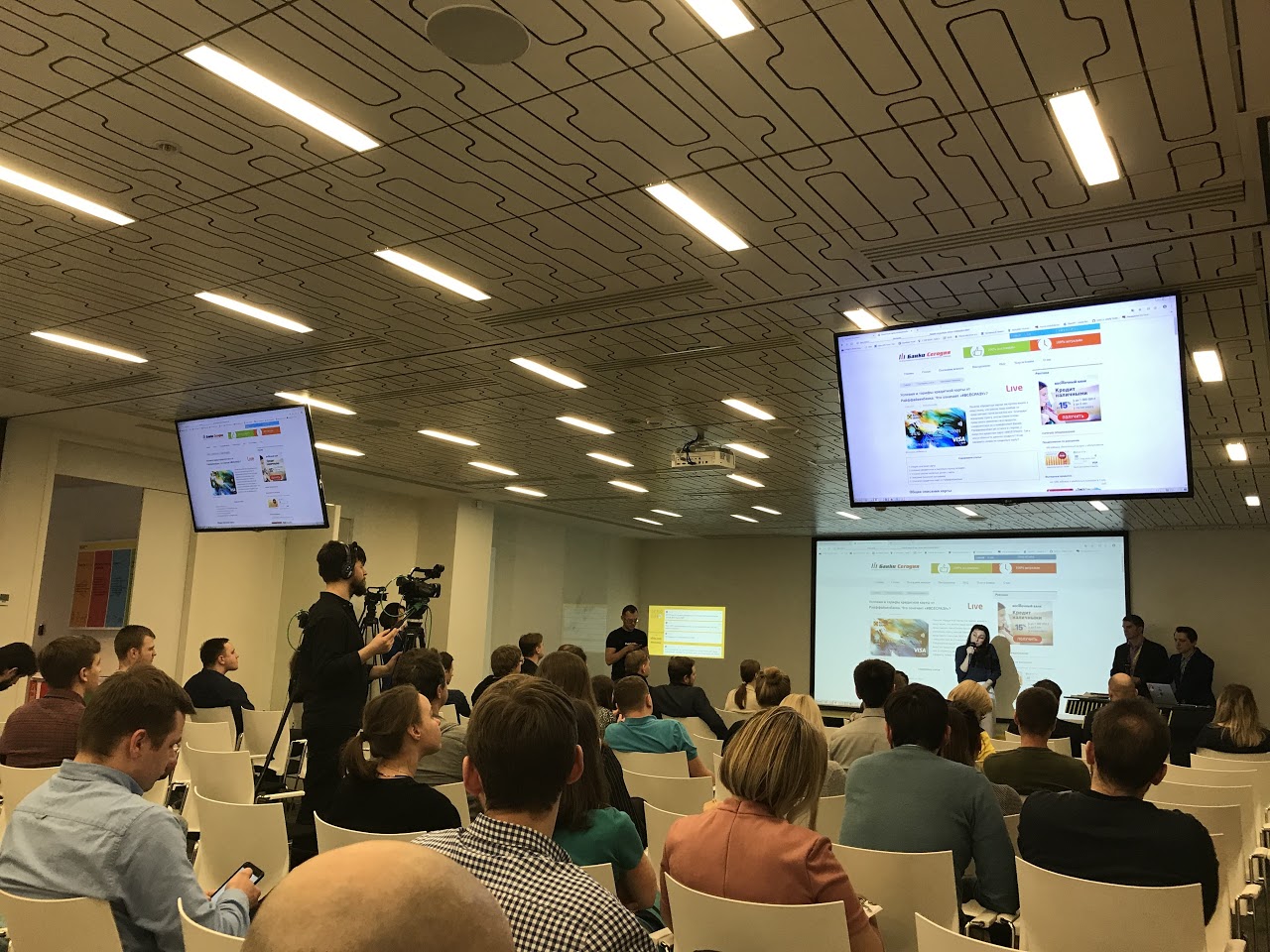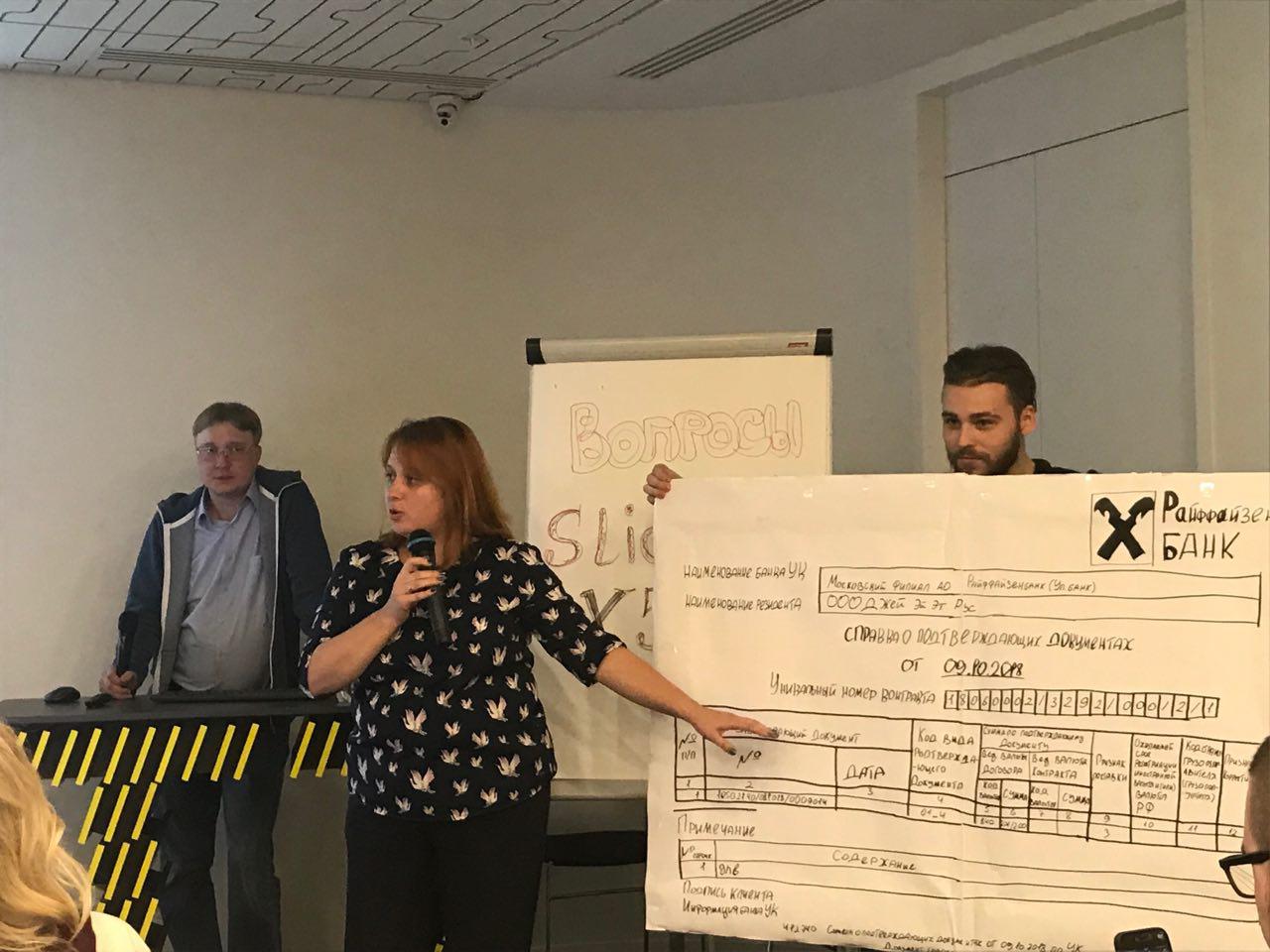Demo Day: why is this all and how to do it UPD + Broadcast
We invite you on July 3 to the big Open Demo Day in Raiffeisenbank, which will be held in Nagatino. Our teams will show live demos, and you will be the first to see what is about to appear on the prod.
At Raiffeisenbank, we hold demo days every month, and we want to not only show the grocery part of this event, but also tell and demonstrate to you how this helps us make the bank better.
Now for many, the topic of digital transformations is very relevant. At each near-IT conference, everyone talks about their experiences and shares the difficulties that were in their way. Stories with digitalizations, transformations, agglomerations are really interesting, and companies face great difficulties, both technical, social and cultural.
It is possible to deal with cultural and social ones by engaging in educational work and putting oneself right in this very culture, but it is very important to do this not alone, but involving people who are brewed in this. And how to do it when there is no clarity around, teams have just formed and are still trying to throw tasks at each other, scaring with directive methods? I'll tell you now.

One of the great rituals at Scrum is to create a demo for customers. It’s not for me to tell how this usually happens. Everything is dignified, we look at the product, we say where to fix something, and then we quietly and peacefully disagree to work on. Wow. Everyone understands what the team was doing, what is its role, who will make improvements, and the customer understands what is being done for him. The fire is the same.
Great event, why not borrow it? When everything around you changes and it is not clear what is happening, the best thing you can do is to tell, closing the information vacuum. So we decided to make a big internal open demo day.
What does this give us?

Ok, that sounds cool. And how to implement all this?
People are usually lazy. They don’t want to waste time just like that. “I come here to write the code, and not go to rallies” - rightly. So the teams will say, unless you explain why they need all this. Let's figure out why:
When a team hears these explanations, it really understands that there are such problems, and it has a motivation to talk about what they are doing.

And then a matter of technology: come up with the rules of the game and implement.
We decided that we would play like this: every month we organize a big demo day. How big is it? 8-10 teams. Each team is given one slot lasting 15 minutes. 10 minutes for a demo, 5 for questions. As a result, we vote for the demo and call to speak next.
What is impossible:
You cannot show presentations. No way. Not at all. Even one slide is impossible. If you need to explain or show something, think of how you can do it without a presentation. Better show the product “before” and “after”. Some teams were creative and came up with graphics on their T-shirts, on flipchart sheets, and even drew giant paper extracts. It was much more effective and interesting. Now everyone in the bank understands what currency control is.

What is important:
It is important to speak in plain language. The audience of the “mini-Olympic” is people from completely different projects, teams and businesses. Therefore, what the teams show and tell must be clear to everyone. If teams introduce terminology, they explain it right away.
We ask you to talk about the benefits and benefits that these changes bring. How much life has become better. It is very important.
And we also knew that forcibly it won’t work. Therefore, participation in the demo day is always voluntary. During the year, each team takes part in the demo day, on average, 3-4 times.
The ability to communicate with their users and customers allows the guys to see how much you can be useful and how important work you do for people. And you really feel very pleased and want to roll mountains.

For us, a demo day is always a celebration and a very valuable event. We are ready to share this experience with you, and therefore we decided to get out of the shadows and show all the best. The program has the juice itself: we will show what just went into production or even has not yet come out, but will soon roll out. The demo rules remain the same as when we spend them for ourselves. No cheating.
To participate in the event, you must register .
Come, it will be interesting!
At Raiffeisenbank, we hold demo days every month, and we want to not only show the grocery part of this event, but also tell and demonstrate to you how this helps us make the bank better.
Now for many, the topic of digital transformations is very relevant. At each near-IT conference, everyone talks about their experiences and shares the difficulties that were in their way. Stories with digitalizations, transformations, agglomerations are really interesting, and companies face great difficulties, both technical, social and cultural.
It is possible to deal with cultural and social ones by engaging in educational work and putting oneself right in this very culture, but it is very important to do this not alone, but involving people who are brewed in this. And how to do it when there is no clarity around, teams have just formed and are still trying to throw tasks at each other, scaring with directive methods? I'll tell you now.

One of the great rituals at Scrum is to create a demo for customers. It’s not for me to tell how this usually happens. Everything is dignified, we look at the product, we say where to fix something, and then we quietly and peacefully disagree to work on. Wow. Everyone understands what the team was doing, what is its role, who will make improvements, and the customer understands what is being done for him. The fire is the same.
Great event, why not borrow it? When everything around you changes and it is not clear what is happening, the best thing you can do is to tell, closing the information vacuum. So we decided to make a big internal open demo day.
What does this give us?
- Transparency. Everyone can see the results of team work: both customers and those for whom these products are made
- Feedback. You can ask a question or make a comment, and the team will receive valuable information from you.
- Call. If you are committed to speaking to the whole bank (and this is one seventh of the Olympic stadium), then you want to show something interesting, so the teams choose ambitious tasks for going to the demo.
- The effect of team building . All team members are equally responsible for the product, so the boundaries between business and IT are being broken in the process of preparation, and team communication is being established.
- Glory and cookies . Our "mini-Olympic" now knows his characters in person and understands what exactly these bearded guys in jeans do for them. We also give teams pies for their performance.

Ok, that sounds cool. And how to implement all this?
People are usually lazy. They don’t want to waste time just like that. “I come here to write the code, and not go to rallies” - rightly. So the teams will say, unless you explain why they need all this. Let's figure out why:
- No one understands who is doing what. Your product on the market may be a rock star, but inside everyone is so mired in the routine of Outlook that no matter how much marketing writes mailings, no one will read anything.
- There was a mini demo. Customers have shown. Customers praised. Only users are not up to date, and how they worked in old inconvenient systems, they continue because they do not know about the new ones.
- Even if everyone knows everything, I often don’t understand what value these or other improvements are. How much more money the bank saved, how the speed of working with certain data has changed, etc.
When a team hears these explanations, it really understands that there are such problems, and it has a motivation to talk about what they are doing.

And then a matter of technology: come up with the rules of the game and implement.
We decided that we would play like this: every month we organize a big demo day. How big is it? 8-10 teams. Each team is given one slot lasting 15 minutes. 10 minutes for a demo, 5 for questions. As a result, we vote for the demo and call to speak next.
What is impossible:
You cannot show presentations. No way. Not at all. Even one slide is impossible. If you need to explain or show something, think of how you can do it without a presentation. Better show the product “before” and “after”. Some teams were creative and came up with graphics on their T-shirts, on flipchart sheets, and even drew giant paper extracts. It was much more effective and interesting. Now everyone in the bank understands what currency control is.

What is important:
It is important to speak in plain language. The audience of the “mini-Olympic” is people from completely different projects, teams and businesses. Therefore, what the teams show and tell must be clear to everyone. If teams introduce terminology, they explain it right away.
We ask you to talk about the benefits and benefits that these changes bring. How much life has become better. It is very important.
And we also knew that forcibly it won’t work. Therefore, participation in the demo day is always voluntary. During the year, each team takes part in the demo day, on average, 3-4 times.
The ability to communicate with their users and customers allows the guys to see how much you can be useful and how important work you do for people. And you really feel very pleased and want to roll mountains.

For us, a demo day is always a celebration and a very valuable event. We are ready to share this experience with you, and therefore we decided to get out of the shadows and show all the best. The program has the juice itself: we will show what just went into production or even has not yet come out, but will soon roll out. The demo rules remain the same as when we spend them for ourselves. No cheating.
To participate in the event, you must register .
Come, it will be interesting!
